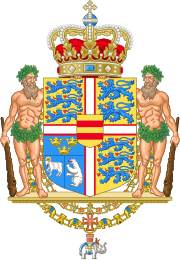
The Folketing, also known as the Parliament of Denmark or the Danish Parliament in English, is the unicameral national legislature (parliament) of the Kingdom of Denmark — Denmark proper together with the Faroe Islands and Greenland. Established in 1849, the Folketing was the lower house of the bicameral parliament called the Rigsdag until 1953; the upper house was the Landsting. It meets in Christiansborg Palace, on the islet of Slotsholmen in central Copenhagen.

There are three types of elections in Denmark: elections to the national parliament, local elections, and elections to the European Parliament. Referendums may also be called to consult the Danish citizens directly on an issue of national concern.

General elections were held in Denmark on 21 September 1971 and in the Faroe Islands on 5 October. The Social Democratic Party remained the largest in the Folketing, with 70 of the 179 seats. Voter turnout was 87% in Denmark proper, 57% in the Faroe Islands and 52% in Greenland.

Parliamentary elections were held in Macedonia on 15 September 2002. The result was a victory for the Together for Macedonia, an alliance of the Social Democratic Union of Macedonia, the Liberal Democratic Party, the Democratic Party of Turks, the Democratic League of Bosniaks, the United Party of Romas in Macedonia, the Democratic Party of Serbs, the Democratic Union of the Vlachs of Macedonia, the Workers-Peasant Party, the Socialist Christian Party of Macedonia and the Green Party of Macedonia, which won 60 of the 120 seats in the Assembly.

General elections were held in Italy on Sunday 2 and also on Monday 3 June 1946. They were the first after World War II and elected 556 deputies to the Constituent Assembly. Theoretically, a total of 573 deputies were to be elected, but the election did not take place in the Julian March and in South Tyrol, which were under military occupation by the United Nations.
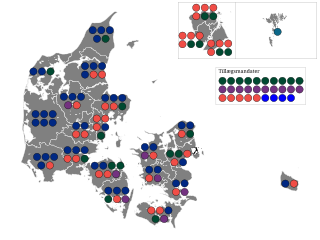
Folketing elections were held in Denmark on 26 April 1920, except in the Faroe Islands, where they were held on 20 May. The election campaign was the most aggressive and bitter in Denmark in the 20th century. Voter turnout was 80.6% in Denmark proper and 58.8% in the Faroe Islands.

Folketing elections were held in Denmark on 28 October 1947, except in the Faroe Islands where they were held on 18 February 1948. The Social Democratic Party remained the largest in the Folketing, with 57 of the 150 seats. Voter turnout was 86% in Denmark proper and 60% in the Faroes.

Parliamentary elections were held in Russia on 12 December 1993. They were the first parliamentary elections in post-Soviet Russia and the only time to the Federation Council, with future members appointed by provincial legislatures and governors.
Parliamentary elections were held in Iceland on 25 April 1987. The Independence Party remained the largest party in the Lower House of the Althing, winning 12 of the 42 seats.
Parliamentary elections were held in Iceland on 24 June 1934. They were the first held after reforms to the electoral system that increased the number of seats in the Lower House from 28 to 33 and ensured that all members of the Althing were elected at the same election. The Independence Party emerged as the largest party in the Lower House, winning 14 of the 33 seats.
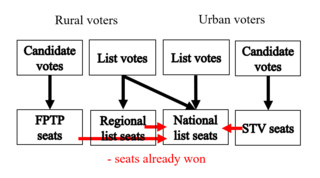
Rural–urban proportional representation (RUP), also called flexible district PR, is a supermixed electoral system which combines the use of single- and multi-member constituencies in a lower tier and top-up seats in an upper tier to meet the different needs of both rural and urban areas, while protecting the objective of proportionality. The term was coined by Fair Vote Canada, which devised a rural–urban system with the intention of meeting the special challenges of Canada's geography, which includes wide-flung, sparsely populated areas.

Copenhagen is one of the 12 multi-member constituencies of the Folketing, the national legislature of Denmark. The constituency was established in 2007 following the public administration structural reform. It consists of the municipalities of Copenhagen, Dragør, Frederiksberg and Tårnby. The constituency currently elects 17 of the 179 members of the Folketing using the open party-list proportional representation electoral system. At the 2022 general election it had 549,748 registered electors.

Greater Copenhagen is one of the 12 multi-member constituencies of the Folketing, the national legislature of Denmark. The constituency was established in 2007 following the public administration structural reform. It consists of the municipalities of Albertslund, Ballerup, Brøndby, Gentofte, Gladsaxe, Glostrup, Herlev, Høje-Taastrup, Hvidovre, Ishøj, Lyngby-Taarbæk, Rødovre and Vallensbæk. The constituency currently elects 11 of the 179 members of the Folketing using the open party-list proportional representation electoral system. At the 2022 general election it had 371,085 registered electors.

North Zealand is one of the 12 multi-member constituencies of the Folketing, the national legislature of Denmark. The constituency was established in 2007 following the public administration structural reform. It consists of the municipalities of Allerød, Egedal, Fredensborg, Frederikssund, Furesø, Gribskov, Halsnæs, Helsingør, Hillerød, Hørsholm and Rudersdal. The constituency currently elects 10 of the 179 members of the Folketing using the open party-list proportional representation electoral system. At the 2022 general election it had 341,544 registered electors.
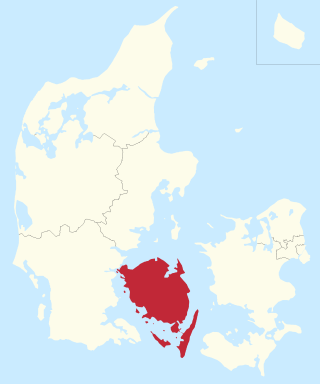
Funen is one of the 12 multi-member constituencies of the Folketing, the national legislature of Denmark. The constituency was established in 2007 following the public administration structural reform. It consists of the municipalities of Ærø, Assens, Faaborg-Midtfyn, Kerteminde, Langeland, Middelfart, Nordfyn, Nyborg, Odense and Svendborg. The constituency currently elects 12 of the 179 members of the Folketing using the open party-list proportional representation electoral system. At the 2022 general election it had 378,832 registered electors.
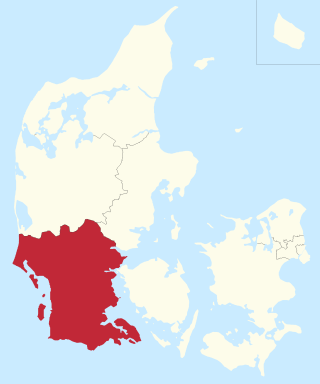
South Jutland is one of the 12 multi-member constituencies of the Folketing, the national legislature of Denmark. The constituency was established in 2007 following the public administration structural reform. It consists of the municipalities of Aabenraa, Billund, Esbjerg, Fanø, Fredericia, Haderslev, Kolding, Sønderborg, Tønder, Varde, Vejen and Vejle. The constituency currently elects 17 of the 179 members of the Folketing using the open party-list proportional representation electoral system. At the 2022 general election it had 526,547 registered electors.
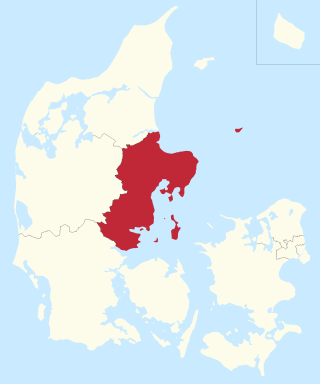
East Jutland is one of the 12 multi-member constituencies of the Folketing, the national legislature of Denmark. The constituency was established in 2007 following the public administration structural reform. It consists of the municipalities of Aarhus, Favrskov, Hedensted, Horsens, Norddjurs, Odder, Randers, Samsø, Skanderborg and Syddjurs. The constituency currently elects 18 of the 179 members of the Folketing using the open party-list proportional representation electoral system. At the 2022 general election it had 602,870 registered electors.
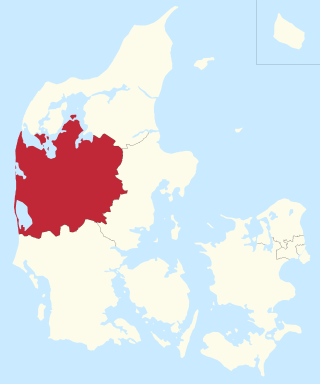
West Jutland is one of the 12 multi-member constituencies of the Folketing, the national legislature of Denmark. The constituency was established in 2007 following the public administration structural reform. It consists of the municipalities of Herning, Holstebro, Ikast-Brande, Lemvig, Ringkøbing-Skjern, Silkeborg, Skive, Struer and Viborg. The constituency currently elects 13 of the 179 members of the Folketing using the open party-list proportional representation electoral system. At the 2022 general election it had 385,528 registered electors.
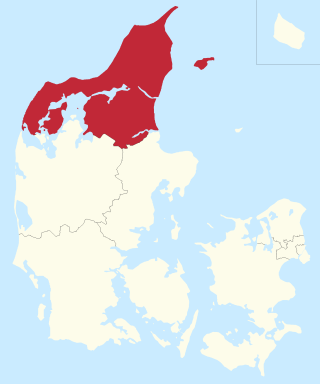
North Jutland is one of the 12 multi-member constituencies of the Folketing, the national legislature of Denmark. The constituency was established in 2007 following the public administration structural reform. It consists of the municipalities of Aalborg, Brønderslev, Frederikshavn, Hjørring, Jammerbugt, Læsø, Mariagerfjord, Morsø, Rebild, Thisted and Vesthimmerland. The constituency currently elects 15 of the 179 members of the Folketing using the open party-list proportional representation electoral system. At the 2022 general election it had 447,556 registered electors.
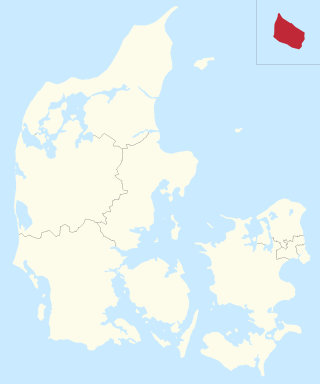
Bornholm is one of the 12 multi-member constituencies of the Folketing, the national legislature of Denmark. The constituency was established in 2007 following the public administration structural reform. It consists of the municipality of Bornholm and the unincorporated archipelago of Christiansø (Ertholmene). The constituency currently elects two of the 179 members of the Folketing using the open party-list proportional representation electoral system. At the 2022 general election it had 30,825 registered electors.
